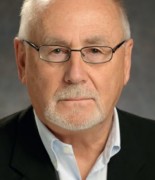
George Grüner Distinguished Professor of Physics,
University of California, Los Angeles
How do you define translational research?
Translation is the series of innovations that are needed to advance fundamental discoveries or inventions into useful products. This raises a number of issues that are not usually discussed in the invention or discovery phase: scalability of fabrication, reproducibility, lifetime, packaging, and yes, the price.
Why the focus on translation?
Within the academic community the nature of research is rapidly changing. More and more the expectation is that scientific endeavours will lead to practical applications, with funding often directed towards a specific goal with a clear value proposition. As a result, universities have become more focused on innovation, and are now developing intellectual property that can be marketed to the enterprise sector.
What is meant by the “valley of death”?
One meaning is simple: death occurs when a company developing a product runs out of money. But there is another definition: the valley of roadblocks that an invention must be pushed through until a viable product emerges. There are many roadblocks, many potential setbacks, many ways a technology can fail, thus the name the valley of death.
How will the journal Translational Materials Research (TMR) connect the different stakeholders in the innovation chain?
Our aim is to discuss issues that are relevant to all stakeholders involved in translation. Articles cover not only advances in technology, but also the steps needed to develop a marketable product. Our Editorial Board also represents the broader community, with company CTOs and venture capitalists sitting alongside leading scientists from academia and industry.
What would you say to authors who are considering publishing their work in TMR?
My hope is that TMR becomes a vital source of information for all those scientists who dream of launching a company and changing the world. Publishing your work with TMR will help all those people to achieve their dream.

Pingback: Show report: Commercialization of micro, nano, and emerging technologies – COMS 2014 (Salt Lake City, Utah) | TMR+